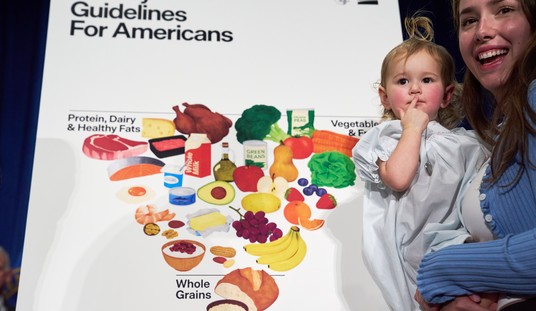Let's try to put some metrics on last Tuesday's historic election. Two years ago, the popular vote for House of Representatives was 54 percent Democratic and 43 percent Republican. That may sound close, but in historic perspective it's a landslide. Democrats didn't win the House popular vote in the South, as they did from the 1870s up through 1992. But they won a larger percentage in the 36 non-Southern states than -- well, as far as I can tell, than ever before.
This year, we don't yet know the House popular vote down to the last digit, partly because California takes five weeks these days to count all its votes (Brazil, which voted last Sunday, counted its votes in less than five hours). But the exit poll had it at 52 percent Republican and 46 percent Democratic, which is probably within a point or so of the final number.
That's similar to 1994, and you have to go back to 1946 and 1928 to find years when Republicans did better. And the numbers those years aren't commensurate, since the then-segregated and Democratic South cast few popular votes. So you could argue that this is the best Republican showing ever.
Nationally, Republicans narrowly missed winning Senate seats in heavily Democratic Washington and in Nevada and California, where less problematic nominees might have won. As in all wave years, they missed winning half a dozen House seats by a whisker (or a suddenly discovered bunch of ballots).
But they made really sweeping gains in state legislatures, where candidate quality makes less difference. According to the National Conference on State Legislatures, Republicans gained about 125 seats in state senates and 550 seats in state houses -- 675 seats in total. That gives them more seats than they've won in any year since 1928.
Republicans snatched control of about 20 legislative houses from Democrats -- and by margins that hardly any political insiders expected. Republicans needed five seats for a majority in the Pennsylvania House and won 15; they needed four seats in the Ohio House and got 13; they needed 13 in the Michigan House and got 20; they needed two in the Wisconsin Senate and four in the Wisconsin House, and gained four and 14; they needed five in the North Carolina Senate and nine in the North Carolina House and gained 11 and 15.
Recommended
All those gains are hugely significant in redistricting. When the 2010 Census results are announced next month, the 435 House seats will be reapportioned to the states, and state officials will draw new district lines in each state. Nonpartisan commissions authorized by voters this year will do the job in (Democratic) California and (Republican) Florida, but in most states it's up to legislators and governors (although North Carolina's governor cannot veto redistricting bills).
Republicans look to have a bigger advantage in this redistricting cycle than they've ever had before. It appears that in the states that will have more than five districts (you can make only limited partisan difference in smaller states), Republicans will control redistricting in 13 states with a total of 165 House districts and Democrats will have control in only four states with a total of 40 districts. You can add Minnesota (seven or eiht districts) to the first list if the final count gives Republicans the governorship and New York (27 or 28 districts) to the second list if the final count gives Democrats the state Senate.
When the tea party movement first made itself heard, Speaker Nancy Pelosi dismissed it as "Astroturf," a phony organization financed by a few millionaires. She may have been projecting -- those union demonstrators you see at Democratic events or heckling Republicans are often paid by the hour.
In any case, the depth and the breadth of Republican victories in state legislative races, even more than their gain of 60-plus seats in the U.S. House and six seats in the Senate, shows that the tea party movement was a genuine popular upheaval of vast dimensions. Particularly in traditional blue-collar areas, voters rejected longtime Democrats or abandoned lifelong partisan allegiances and elected Republicans.
This will make a difference not just in redistricting. State governments face budget crunches and are supposed to act to help roll out Obamacare. Republican legislatures can cut spending and block the rollout. "I won," Barack Obama told Republican leaders seeking concessions last year. This year, he didn't.























Join the conversation as a VIP Member